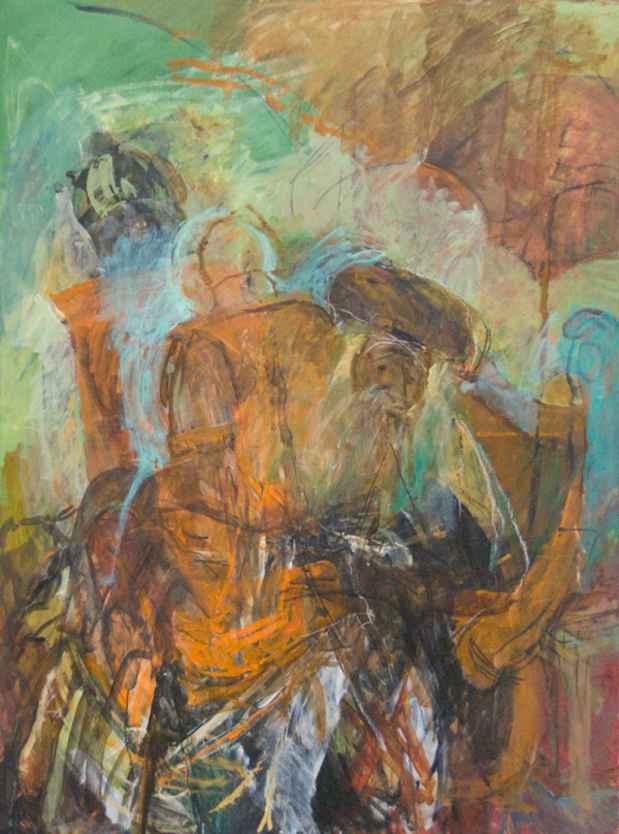Hyman Bloom “1940-2005”
WHITE BOX

This event has ended.
Hyman Bloom (1913-2009) was a Latvian-born painter influenced by Eastern European Jewish heritage, Middle Eastern and South Asian music, and mortality. Bloom and his family immigrated to Boston in the 1920s where he was discovered at 14, and received a scholarship to study drawing under famed Harvard art professor, Denman Ross.
The Rabbinical paintings presented in this exhibition, permeated by historical influences ranging from Grünewald and Rembrandt, to Redon and Soutine, to Indian tantric art and Chinese painting, reflect the mystical and macabre with vivid intensity: sordid subjects depicted in sensual, jewel-like colors. According to the artist, his works serve as “an attempt to cope with one’s destiny and become master of it.”
Art critic, Thomas Hess, hailed Bloom in Art News as “one of the outstanding painters of his generation”. Bloom’s “successors” Jackson Pollock and Willem de Kooning considered him the first Abstract Expressionist. His first public showing contained thirteen paintings in the Museum of Modern Art exhibition “Americans 1942”, curated by Dorothy C. Miller. Bloom represented the United States at the 1950 Venice Biennale alongside Gorky, Pollock, and de Kooning. In 1954, a traveling retrospective of his work appeared at the Whitney Museum of American Art, to critical and press acclaim. In the mid-50s, he participated in an experiment recording the effects of LSD in his drawings.
Bloom was a key figure in the Boston Expressionist movement. His shy, reclusive nature did not allow for joining arms with the Abstract Expressionist explosion in the art world of the mid-20th century in New York. Rather, uninterested in fame, Bloom veered off in his own direction, evoking the spiritual and the metaphysical, and not succumbing either to the pop art movement that became ubiquitous later. Nonetheless, he remains an important link in American post-war art history, and his work has been increasingly revisited since his death at the age of 96.
Curator’s note:
“Visiting Hyman Bloom at his studio in 2008, I entered a very special place filled with mystical artifacts and scents, his paintings bubbled with deep knowledge of paint and life. Bloom, 95, was observing me with his deep brown eyes throughout our conversation; I felt the strength and pride of his life’s achievement. One sensed, as he surely did, that death would not be a finality. Certainly, his work endures.
Bloom’s subject matter was vast and came second only to his pictorial skills. Given that White Box is located at the epicenter of Jewish immigration, home to dozens of synagogues, I choose to focus on his Rabbinical series for the upcoming show, which includes 19 paintings and 47 drawings.
Holland Cotter in his obituary (a fitting tribute) pointed out ‘In the 40’s and 50’s Bloom was regarded the precursor to the Abstract Expressionism and one of the most significant American artists of the post-World War 2 era. Indeed, none other than Clement Greenberg, Willem de Kooning and Jackson Pollock each labeled Bloom “The greatest artist in America”.’
Personally when I look at his work I see numerous visual nuances found later in the paintings of Philip Guston and Lucien Freud.”
[Image: Hyman Bloom “Jew with Orange Torah” (1980 - 2008) oil and chalk on canvas 56 x 42 in. Courtesy of Hyman Bloom Estate.]
Media
Schedule
from July 17, 2013 to September 15, 2013
Opening Reception on 2013-07-18 from 18:00 to 20:00